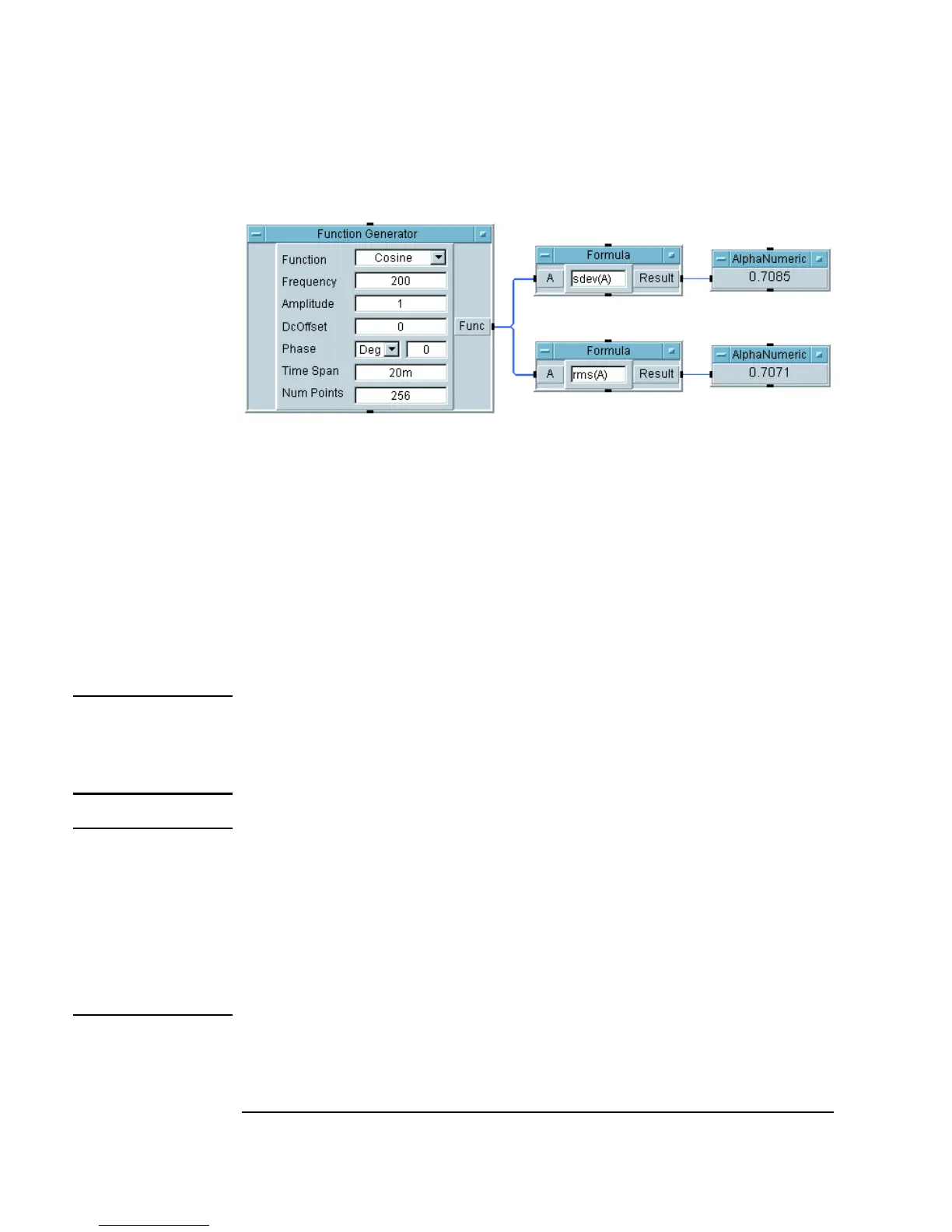184 Chapter 4
Analyzing and Displaying Test Data
Creating Expressions with the Formula Object
Figure 4-7. Formula Examples Using VEE Functions
Now calculate the standard deviation and root mean square using only one
Formula object. Formulas can have multiple output terminals with values
assigned to them.
6. Double-click the object menu to
Cut one of the Formula objects.
7. In the remaining
Formula object, change the expression to
B=sdev(A);
C=rms(A)
Note When a Formula object contains multiple expressions, you must put a
semicolon at the end of an expression to distinguish it from the next
expression. For example, in the formula
B=sdev(A); the semi-colon
indicates the end of the expression.
Note You can put line breaks at any point in a Formula object. The formula is
read as one expression as long as there are no semi-colons. For example, you
could enter a single expression as
B=sdev
(A)
You can also add spaces in the formula to improve readability.

